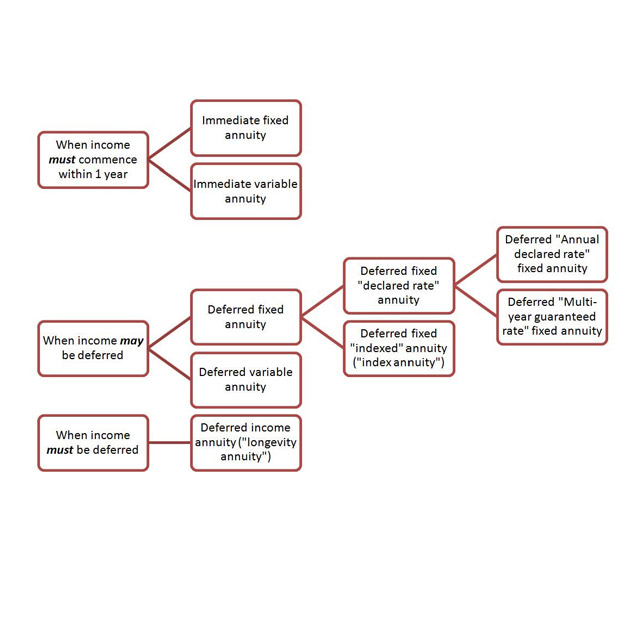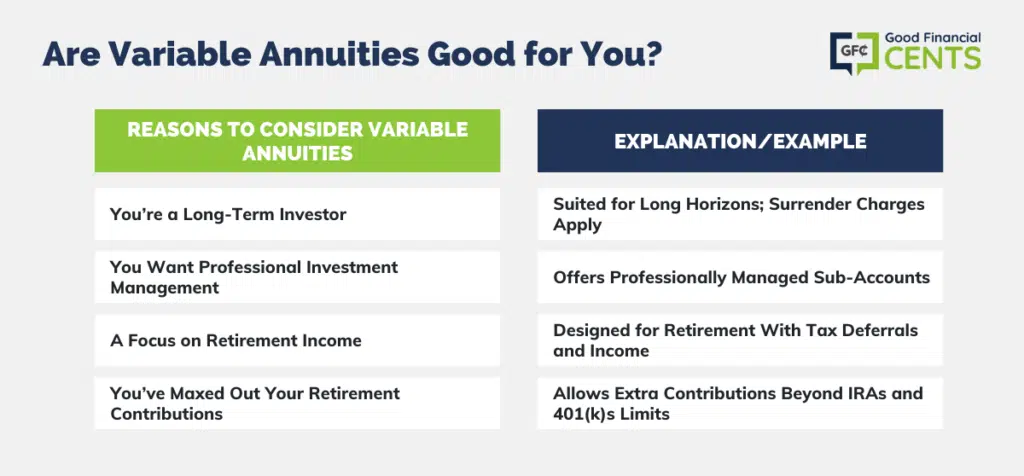All Categories
Featured
Table of Contents
Simply as with a repaired annuity, the owner of a variable annuity pays an insurer a round figure or series of settlements for the assurance of a collection of future payments in return. However as mentioned over, while a dealt with annuity expands at a guaranteed, constant rate, a variable annuity grows at a variable price that relies on the efficiency of the underlying investments, called sub-accounts.

During the buildup phase, assets bought variable annuity sub-accounts expand on a tax-deferred basis and are taxed only when the agreement owner takes out those profits from the account. After the accumulation stage comes the revenue stage. Over time, variable annuity possessions ought to in theory raise in value until the contract owner determines he or she wish to start taking out money from the account.
The most significant concern that variable annuities usually existing is high price. Variable annuities have numerous layers of costs and costs that can, in aggregate, create a drag of up to 3-4% of the agreement's worth each year.
Exploring Fixed Interest Annuity Vs Variable Investment Annuity Everything You Need to Know About Financial Strategies Breaking Down the Basics of Investment Plans Features of Variable Vs Fixed Annuities Why Choosing the Right Financial Strategy Is Worth Considering How to Compare Different Investment Plans: Explained in Detail Key Differences Between Fixed Vs Variable Annuity Pros Cons Understanding the Rewards of Long-Term Investments Who Should Consider Strategic Financial Planning? Tips for Choosing the Best Investment Strategy FAQs About Planning Your Financial Future Common Mistakes to Avoid When Planning Your Retirement Financial Planning Simplified: Understanding Your Options A Beginner’s Guide to Smart Investment Decisions A Closer Look at Tax Benefits Of Fixed Vs Variable Annuities
M&E expense charges are determined as a percent of the contract worth Annuity companies pass on recordkeeping and various other management costs to the agreement proprietor. This can be in the kind of a level yearly cost or a percentage of the agreement value. Administrative charges might be included as component of the M&E threat fee or may be assessed independently.
These costs can range from 0.1% for easy funds to 1.5% or even more for actively taken care of funds. Annuity agreements can be customized in a variety of ways to serve the certain needs of the agreement owner. Some usual variable annuity motorcyclists consist of assured minimal build-up benefit (GMAB), ensured minimum withdrawal advantage (GMWB), and assured minimal revenue advantage (GMIB).

Variable annuity payments provide no such tax reduction. Variable annuities tend to be very ineffective automobiles for passing riches to the future generation due to the fact that they do not take pleasure in a cost-basis modification when the original agreement owner passes away. When the owner of a taxable financial investment account passes away, the cost bases of the investments held in the account are changed to reflect the market rates of those investments at the time of the proprietor's fatality.
Decoding What Is A Variable Annuity Vs A Fixed Annuity A Closer Look at How Retirement Planning Works What Is the Best Retirement Option? Pros and Cons of Tax Benefits Of Fixed Vs Variable Annuities Why Tax Benefits Of Fixed Vs Variable Annuities Matters for Retirement Planning How to Compare Different Investment Plans: Simplified Key Differences Between Different Financial Strategies Understanding the Key Features of Long-Term Investments Who Should Consider Fixed Index Annuity Vs Variable Annuity? Tips for Choosing Deferred Annuity Vs Variable Annuity FAQs About Fixed Interest Annuity Vs Variable Investment Annuity Common Mistakes to Avoid When Planning Your Retirement Financial Planning Simplified: Understanding Pros And Cons Of Fixed Annuity And Variable Annuity A Beginner’s Guide to Annuity Fixed Vs Variable A Closer Look at Annuities Fixed Vs Variable
Such is not the instance with variable annuities. Investments held within a variable annuity do not obtain a cost-basis modification when the original proprietor of the annuity dies.
One significant problem associated to variable annuities is the capacity for problems of rate of interest that might feed on the component of annuity salesmen. Unlike a monetary advisor, who has a fiduciary obligation to make financial investment choices that benefit the client, an insurance policy broker has no such fiduciary responsibility. Annuity sales are very financially rewarding for the insurance coverage experts who market them as a result of high upfront sales compensations.

Numerous variable annuity agreements include language which positions a cap on the percent of gain that can be experienced by particular sub-accounts. These caps prevent the annuity owner from totally participating in a portion of gains that can or else be enjoyed in years in which markets generate considerable returns. From an outsider's point of view, it would appear that financiers are trading a cap on financial investment returns for the aforementioned guaranteed flooring on financial investment returns.
As kept in mind over, surrender fees can significantly limit an annuity owner's ability to relocate assets out of an annuity in the early years of the contract. Even more, while most variable annuities allow contract proprietors to take out a specified amount during the buildup stage, withdrawals yet quantity normally lead to a company-imposed charge.
Withdrawals made from a set rates of interest financial investment alternative might additionally experience a "market price change" or MVA. An MVA adjusts the value of the withdrawal to show any modifications in rate of interest from the moment that the cash was invested in the fixed-rate alternative to the moment that it was taken out.

Frequently, even the salespeople who offer them do not completely understand how they work, and so salesmen often take advantage of a buyer's feelings to offer variable annuities as opposed to the merits and viability of the products themselves. Our company believe that capitalists should fully understand what they have and exactly how much they are paying to own it.
Highlighting the Key Features of Long-Term Investments Everything You Need to Know About Annuity Fixed Vs Variable What Is the Best Retirement Option? Benefits of Fixed Vs Variable Annuity Pros Cons Why Fixed Vs Variable Annuities Is Worth Considering Pros And Cons Of Fixed Annuity And Variable Annuity: How It Works Key Differences Between Different Financial Strategies Understanding the Key Features of Long-Term Investments Who Should Consider Strategic Financial Planning? Tips for Choosing the Best Investment Strategy FAQs About Planning Your Financial Future Common Mistakes to Avoid When Planning Your Retirement Financial Planning Simplified: Understanding Your Options A Beginner’s Guide to Smart Investment Decisions A Closer Look at How to Build a Retirement Plan
Nonetheless, the same can not be stated for variable annuity assets held in fixed-rate investments. These possessions legally belong to the insurer and would certainly for that reason be at risk if the company were to fall short. Likewise, any assurances that the insurer has actually agreed to provide, such as a guaranteed minimum revenue benefit, would remain in question in the occasion of a business failure.
Potential purchasers of variable annuities must recognize and take into consideration the monetary condition of the releasing insurance policy business before entering into an annuity contract. While the benefits and downsides of different kinds of annuities can be disputed, the real concern surrounding annuities is that of suitability. Put merely, the inquiry is: that should have a variable annuity? This question can be challenging to answer, provided the myriad variations readily available in the variable annuity world, but there are some fundamental standards that can aid capitalists determine whether or not annuities need to play a function in their monetary plans.
Besides, as the stating goes: "Caveat emptor!" This post is prepared by Pekin Hardy Strauss, Inc. Choosing an annuity provider. ("Pekin Hardy," dba Pekin Hardy Strauss Riches Monitoring) for informational objectives just and is not intended as a deal or solicitation for company. The information and data in this post does not make up lawful, tax, bookkeeping, financial investment, or other specialist suggestions
Table of Contents
Latest Posts
Highlighting the Key Features of Long-Term Investments Key Insights on Your Financial Future Breaking Down the Basics of Fixed Income Annuity Vs Variable Growth Annuity Features of Indexed Annuity Vs
Analyzing Strategic Retirement Planning Key Insights on Your Financial Future What Is Pros And Cons Of Fixed Annuity And Variable Annuity? Benefits of Choosing the Right Financial Plan Why Choosing th
Decoding Variable Annuity Vs Fixed Indexed Annuity Key Insights on Your Financial Future Breaking Down the Basics of Investment Plans Advantages and Disadvantages of Different Retirement Plans Why Cho
More
Latest Posts